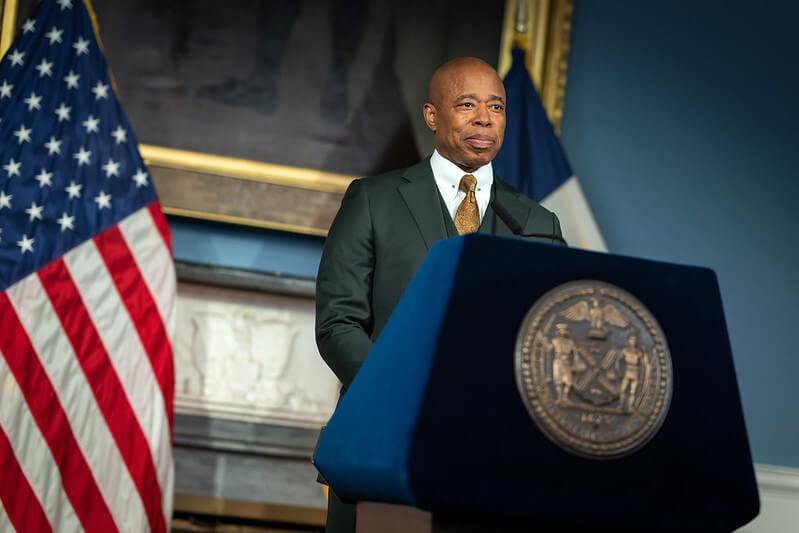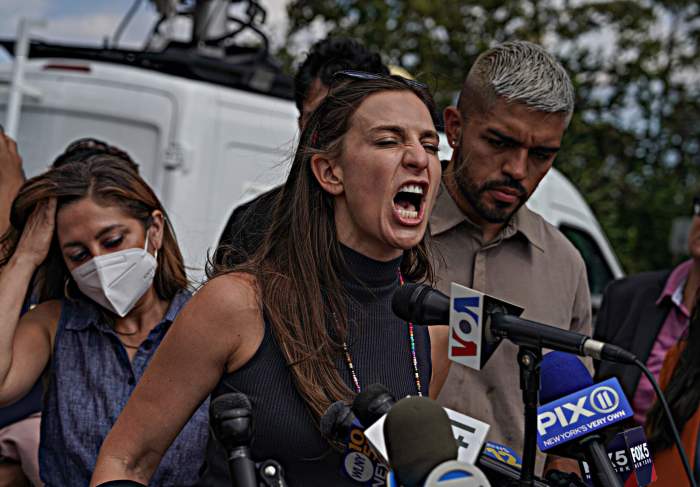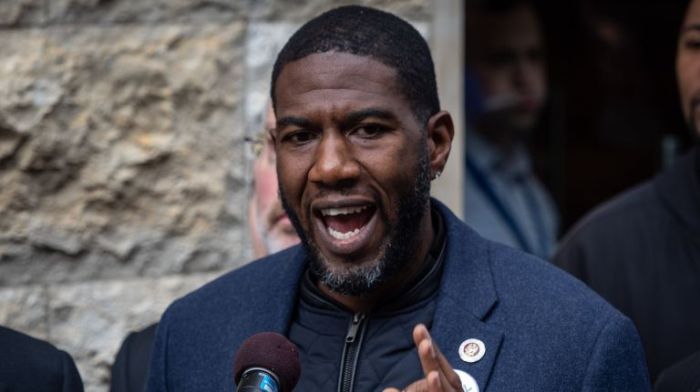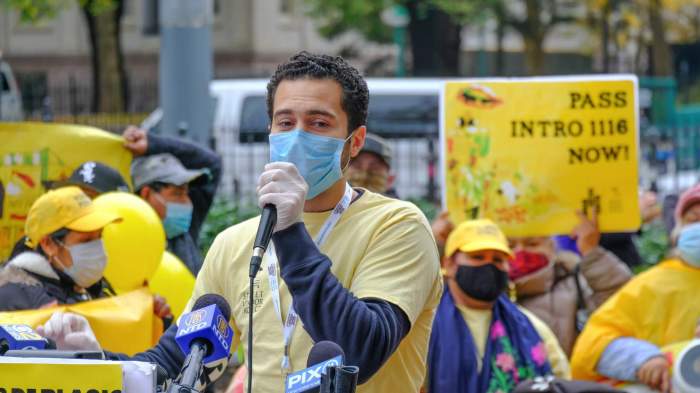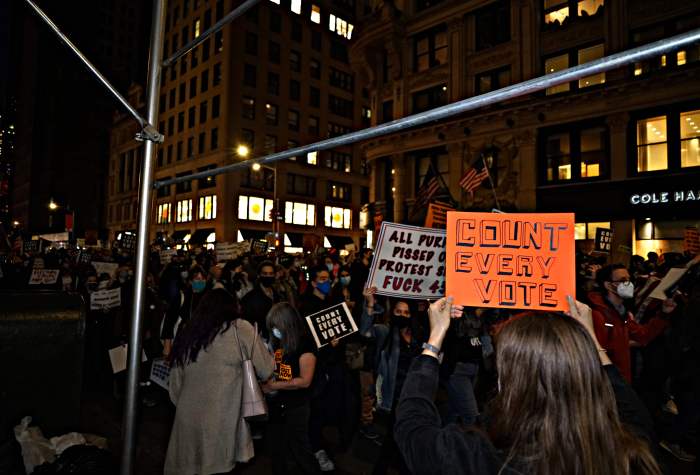https://youtu.be/m4qPiHlTbTI
Mayor Eric Adams has taken on a herculean task as his first year in office ends: getting the city’s sprawling mental health crisis under control.
That effort came in a the form of a directive to the city’s first responders – including NYPD, firefighters and EMS workers – and mental health workers that they have legal standing to forcibly hospitalize anyone who appears to be a danger to themselves due to an inability to meet their “basic needs,” even if they aren’t a threat to others. The term “basic needs” applies to necessities like food, shelter and health care.
Along with the directive, the mayor also rolled out an 11-point mental health legislative agenda, which he’d like to see enacted by state lawmakers when the state legislature reconvenes next month.
In the weeks since Adams issued the directive, it’s been met with criticism from other public officials like city Public Advocate Jumaane Williams and City Council Speaker Adrienne Adams as well as several advocacy groups for the homeless and those with mental health issues. They’ve raised questions about whether the NYPD should be involved in the plan, how cops and first responders will determine whether someone should be involuntarily hospitalized and a current shortage of psychiatric beds across the city.
The plan even received its first legal challenge from a coalition of advocates and individuals with mental disabilities last week seeking to halt the order, charging that it violates the civil rights of homeless people and those with mental disabilities and is unconstitutional. But a federal judge ruled Wednesday that it was too early that it was too early to slam the brakes on the plan.
In a bid to get more clarity on the plan and the administration’s thinking behind it, amNewYork Metro sat down with Adams for an exclusive interview over Zoom.
The following interview has been lightly edited for length and clarity.
amNewYork Metro: So, this mental health directive, you put it out close to a year after taking office. And you mentioned during the press conference when you rolled it out that first responders and health care professionals already had the authority to do this under city and state law. Can you tell me what changed for you over the course of the year? Why did you decide to roll it out now, rather than earlier on?
Mayor Adams: That’s a great question. And I think the mere fact you reflected that it took a year after taking office, that shows we had deep thinking, we communicated with a lot of people, we did a lot of field work. Back in January, the governor and I rolled out our Subway Safety Plan. I announced sometime a few days later that we were going to be focusing on encampments and tents. Because I went out and visited people who were living in encampments and I saw just something that is really devastating: people living with drug paraphernalia, stale food, human waste, unkept, some of them were dealing with real mental health illnesses. We continued to talk with our expert, Dr. [Ashwin] Vasan, who’s in charge of the Department of Health and Mental Hygiene (DOHMH), and we spoke with others. And so after the first phase, we returned with a second phase based on our observations. And what you saw during the announcement was the third phase. We realized after riding the subways, walking the streets, that there were far too many people who were doing this work that didn’t know the clarity of what their authority was actually. We are giving that clarity matched with training right now.
amNewYork Metro: Just following up on that, when did it become clear to you that this was something that you could do legally?
Mayor Adams: When I was out in the subway system, and I was speaking with officers, and we were clearly seeing individuals who were unable to take care of their basic needs and dealing with some real mental health issues that really prevented them from taking care of themselves, I went back and asked our legal team, “What can we actually do and what can’t we do?” And after speaking with some of the mental health professionals, and outreach workers, and I was questioning them when I saw them interacting with some people, clearly, they were not clear also. And we had to be honest about that. And that’s when we sat back and we got the lawyers together and said, “let’s look at the law. Let’s look at what our authorizations are and make a good determination on how to implement.”
‘Everyone with a mental health illness is not going to be mandated to go seek care’
amNewYork Metro: On Dec. 14, a judge ruled against blocking the plan for now. The advocates who were trying to get the plan paused argue it violates the civil rights of homeless individuals and people with mental health issues. Do you feel vindicated by that ruling? And also, how do you respond to their contention that the plan would lead to anyone with a mental health issue or who appears to be in distress in public being hospitalized rather than just those who are in severe crisis?
Mayor Adams: I really don’t feel vindicated by the decision. I’m actually saddened because there are those in our city who are actually advocating to remain in place the status quo. That status quo is people living on our streets, who do not have the mental capacity to determine that they need help. If someone is on the street, no shoes on, no shirt on, in 20 degree weather and stating that they’re waiting for the spaceship to come and take them back home to Mars, that’s a problem. And for us to just walk past them and say someone has a constitutional right to be in that condition, it’s just not right and it’s not fair. And we are saying as an administration it is inhumane to do so. We’re asking these advocates to come with us, see the work we’re doing. Everyone with a mental health illness is not going to be mandated to go seek care. That is just untrue. And that is what they are stating. There is a very small population of people who can’t take care of their basic needs and they are a danger to themselves and others. That is the small group we’re talking about. And those that fit that criteria that outreach workers see, they’re going to go to the hospital and doctors are going to make a determination on what the next steps must be.
amNewYork Metro: So, on those next steps, you spoke a little bit about that continuum of care during the announcement. Can you give us a little bit more clarity on what that looks like in practice? What happens after someone is brought in for that initial evaluation?
Mayor Adams: Well, there are several pathways. And we’re not kidding ourselves that the complete infrastructure that is needed is not built out. We need help from the state. We lost about 1,000 hospital beds during COVID that dealt with individuals with mental health illnesses, we need to get those beds back online. The 50 beds that the governor put online, many people didn’t understand those beds are dealing with long term care, people who are going to be under care for 125 days, or sometimes even longer. Those beds are needed. But the real beds that we need are the approximately 1,000 beds, both in private and public hospitals, that are going to focus on those who we can get back on medication, normalize their condition, and allow them to receive the outpatient care that they deserve. We have to build that out. We know we don’t have enough. And that is why we put in place a real legislative agenda for Albany to assist us in getting the services that we need to our fellow New Yorkers, who are going through some extreme mental health illnesses to the point of endangerment.
‘We’re dealing with the issue right now, while we deal with the long term things’
amNewYork Metro: Yeah, so my next question was on the number of beds. Approximately, I believe it was as of September, 16% were not online. How are you going to get that Albany agenda pushed forward? What’s the strategy here to get state lawmakers to meet you on this? Also, in terms of private hospitals, how are you going to get them on board?
Mayor Adams: We did a clear inventory of the needs. We cannot leave the needs in abstract. We cannot just say that we need to fix the problem. Everyone talks about the prevention, the long term things that we need to do, because they’re years away in many cases. But the question becomes, what are we going to do right now? And that is a challenging thing to do, because it’s easy to kick the can down the road. And I’m just not going to do that as the mayor. We’re dealing with the issue right now, while we deal with the long term things. And right now, we need to get assistance from the private and public hospitals. We were happy to hear Ken Raske (president of the Greater New York Hospital Association) point out that they understand the importance of this. Let’s get to the table. Let’s figure out how we look at the inventory of items that are needed and implement the plans to get there. Let’s work off of one blueprint. And that is what we attempted to do when we made this announcement and what we’re going to continue to do as we move forward.
amNewYork Metro: It might be very hard to say this right now, but what does success look like in terms of this directive? How long do you think this will be in place? Is this something you see being permanent a year from now? What would have to happen for it to be lifted?
Mayor Adams: It’s unfortunate but it’s a moving target. Every day people are dealing with mental health illnesses. And sometimes, if the care is not put in place, it spirals out of control. Our goal is to catch individuals upstream before they reach the point that they are in the street unable to care for themselves or even living behind closed doors and dealing with severe mental health illnesses. And so it’s difficult to say that this problem is going to be eradicated in a year, two years, we can’t say that. We know we can alleviate the number of people who are on the streets in these conditions and those who need the wraparound care. It’s different from those who just need support. We’re finding that telemedicine can assist people who are going through crisis to speak with a psychiatrist or psychologist and get the necessary assistance they need. We’re not going to leave any stone unturned. But it is really challenging to state that something is going to be resolved in a short period of time because there’s an endless flow of people who are dealing with crises every day and we’re seeing younger and younger people who are dealing with mental health illnesses.



